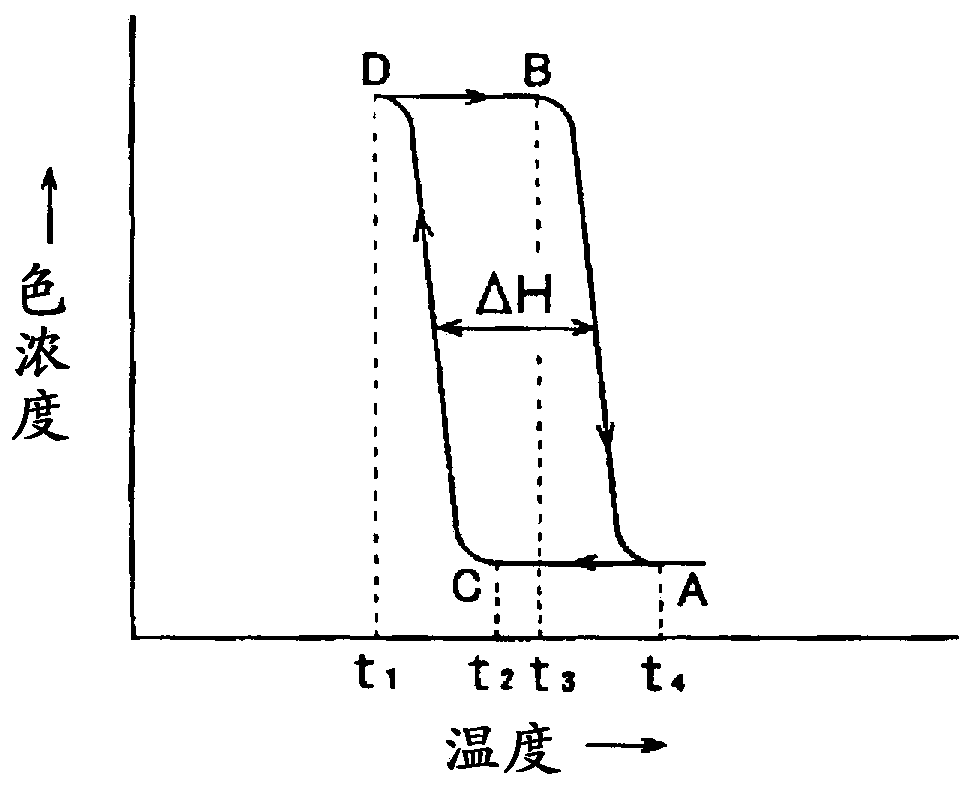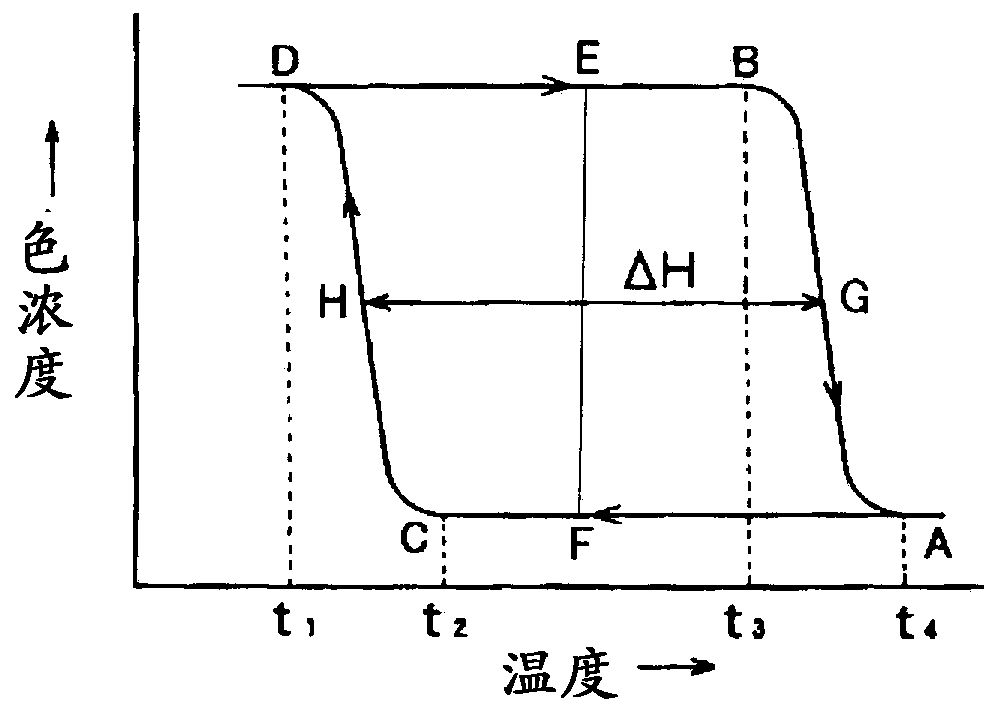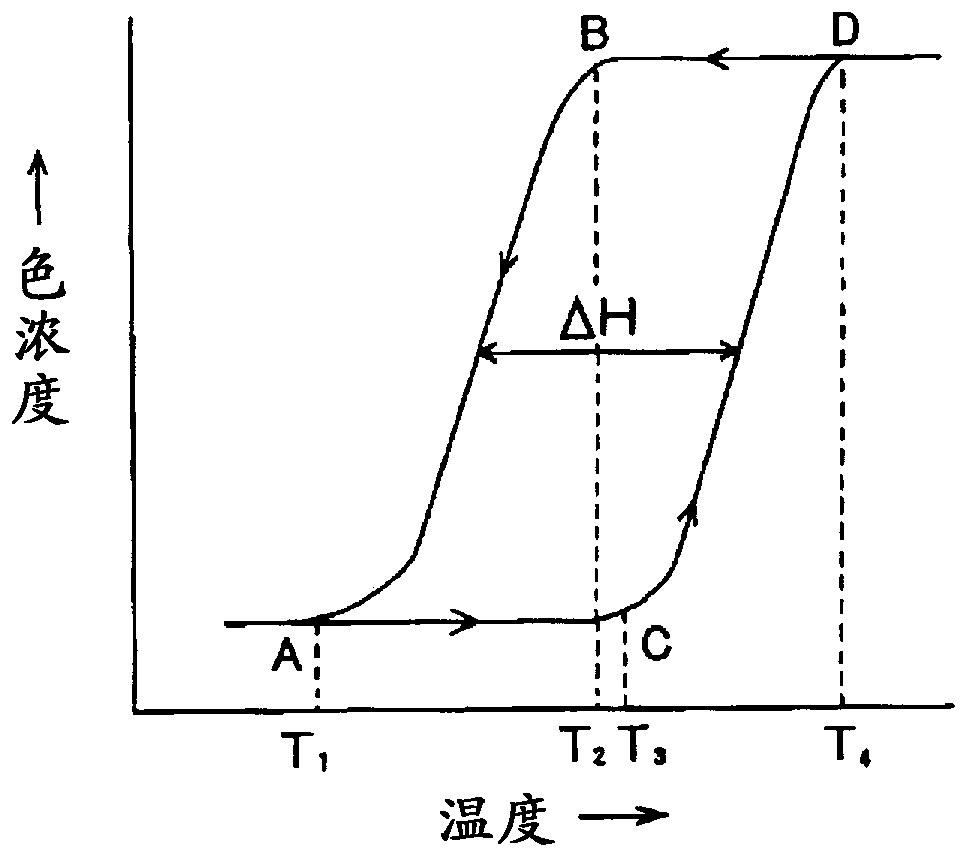Reversible thermochromic aqueous ink composition and writing instrument using same
A technology for writing instruments and compositions, applied in writing instruments, household appliances, inks, etc., can solve the problems of easy pigment sedimentation, reduced ink discharge, low viscosity, etc., and achieve the effect of excellent dispersion stability
- Summary
- Abstract
- Description
- Claims
- Application Information
AI Technical Summary
Problems solved by technology
Method used
Image
Examples
Embodiment 1
[0268] Preparation of microcapsule pigments
[0269] A microcapsule pigment suspension containing a color-memory reversible thermochromic composition composed of 3',6'-bis[phenyl(3- Methylphenyl)amino]-spiro[isobenzofuran-1(3H),9'-[9H]xanthene]-3-one 3.00 parts, 4-4'-[2, 5.00 parts of 2,2-trifluoro-1-(trifluoromethyl)ethylene]biphenyl, 3.00 parts of 4-4'-(2-ethylhexylidene)bisphenol, cyclohexyl group as component (c) Consists of 50.00 parts of methyl-4-biphenylacetate.
[0270] The suspension is centrifuged to isolate the microcapsule pigments.
[0271] The average particle size of the microcapsule pigment is 1.9 μm, the complete decolorization temperature is 61-62°C, the complete color development temperature is -20°C, and changes from blue to colorless by temperature change.
[0272] Preparation of ink composition
[0273] 0.40 parts of polymer coagulant (hydroxyethyl cellulose, trade name CELLOSIZE EP-09, manufactured by Dow Chemikaru Japan Co., Ltd.), 0.40 parts of acr...
Embodiment 2
[0285] Preparation of microcapsule pigments
[0286] A microcapsule pigment suspension containing a color-memory reversible thermochromic composition composed of 3',6'-bis[phenyl(3- Methylphenyl)amino]-spiro[isobenzofuran-1(3H),9'-[9H]xanthene]-3-one 3.00 parts, 4-4'-[2, 5.00 parts of 2,2-trifluoro-1-(trifluoromethyl)ethylidene]biphenol, 3.00 parts of 4-4'-(2-ethylhexylene)biphenol, 2- Consists of 50.00 parts of [4-(phenylmethoxy)phenyl]ethyl decanoate.
[0287] The suspension is centrifuged to isolate the microcapsule pigments.
[0288] The average particle size of the microcapsule pigment is 1.9 μm, the complete decolorization temperature is 60°C, and the complete color development temperature is -20°C. It changes from blue to colorless by temperature change.
[0289] Preparation of ink composition
[0290] 0.40 parts of polymer coagulant (hydroxyethyl cellulose, trade name CELLOSIZE EP-09, manufactured by Dow Chemikaru Japan Co., Ltd.), 0.40 parts of acrylic polymer dis...
Embodiment 3
[0301] Preparation of microcapsule pigments
[0302] A microcapsule pigment suspension containing a color-memory reversible thermochromic composition composed of 6'-(diphenylamino)-2'- [(3-(trifluoromethyl)phenyl)-(dipentylamino)-2'-[(3-(trifluoromethyl)phenyl)amino]-spiro[isobenzofuran-1(3H ), 6.00 parts of 9'-(9H)xanthene]-3-one, 4-4'-[2,2,2-trifluoro-1-(trifluoromethyl)ethylene as component (b) ] 6.00 parts of biphenol, 4.00 parts of 4-4'-(2-ethylhexylidene) bisphenol, and 50.00 parts of cyclohexylmethyl-4-biphenylacetate as component (c).
[0303] The suspension is centrifuged to isolate the microcapsule pigments.
[0304] The average particle size of the microcapsule pigment is 1.9 μm, the complete decolorization temperature is 61-62°C, the complete color development temperature is -20°C, and changes from green to colorless through temperature changes.
[0305] Preparation of ink composition
[0306] 0.40 parts of polymer coagulant (hydroxyethyl cellulose, trade name ...
PUM
| Property | Measurement | Unit |
|---|---|---|
| The average particle size | aaaaa | aaaaa |
| Surface tension | aaaaa | aaaaa |
| Surface tension | aaaaa | aaaaa |
Abstract
Description
Claims
Application Information
 Login to View More
Login to View More - R&D
- Intellectual Property
- Life Sciences
- Materials
- Tech Scout
- Unparalleled Data Quality
- Higher Quality Content
- 60% Fewer Hallucinations
Browse by: Latest US Patents, China's latest patents, Technical Efficacy Thesaurus, Application Domain, Technology Topic, Popular Technical Reports.
© 2025 PatSnap. All rights reserved.Legal|Privacy policy|Modern Slavery Act Transparency Statement|Sitemap|About US| Contact US: help@patsnap.com



